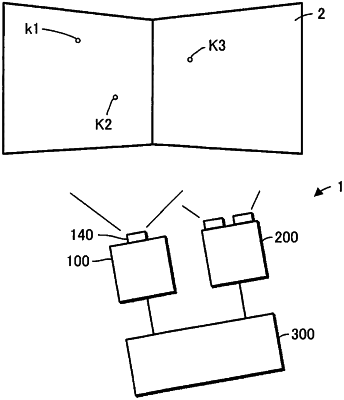| CPC H04N 9/3185 (2013.01) [G01B 11/002 (2013.01); G01B 11/022 (2013.01); G01B 11/2518 (2013.01); G03B 21/14 (2013.01)] | 10 Claims |

|
1. A position specifying method comprising:
generating relation information based on first coordinates and second coordinates, the first coordinates indicating coordinates of a portion of a target object in three dimensions, at which a specific point is located, in a state where a projector projects a projection image including the specific point onto the target object, the second coordinates indicating coordinates of the specific point in the projection image in two dimensions, the relation information indicating a correspondence between a three-dimensional coordinate system and a projector coordinate system, the three-dimensional coordinate system being used by a measuring instrument that specifies the first coordinates, the projector coordinate system defining the second coordinates and coordinates of the projector;
specifying a position of the projector in the three-dimensional coordinate system based on the coordinates of the projector, by using the relation information;
setting a virtual position corresponding to a position of the target object, in a virtual space;
disposing a virtual target object corresponding to the target object, at the virtual position in the virtual space;
displaying a first image on the virtual target object;
disposing a virtual camera at the position of the projector in a virtual space coordinate system, in the virtual space; and
generating a second image obtained by the virtual camera picking up the first image displayed on the virtual target object.
|